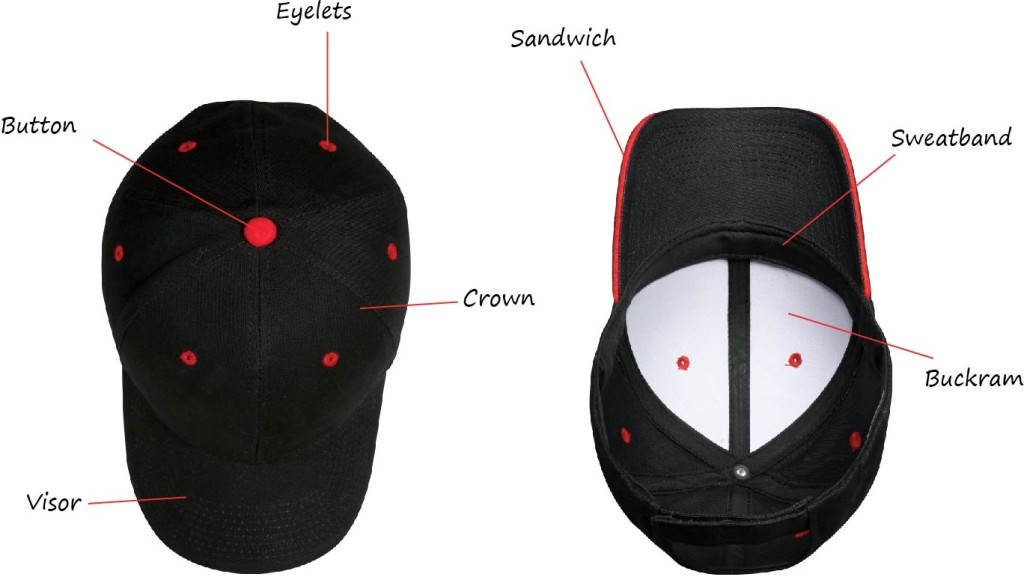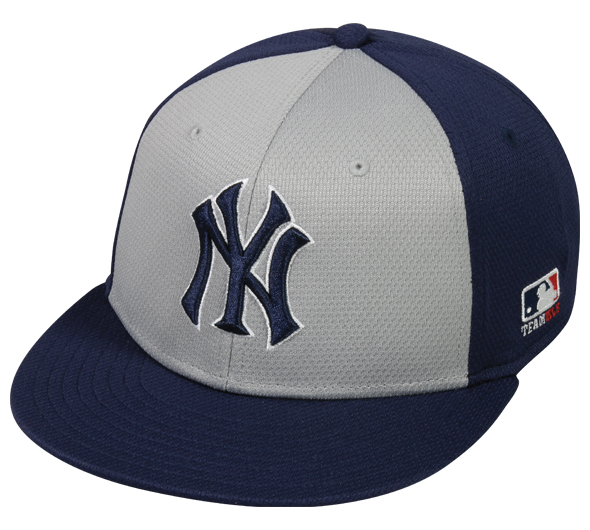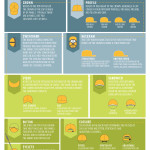Well, you can’t eat this sandwich, but as millions of people who love to wear a baseball cap, they might have this sandwich and not even know it. So if you want to find out if you have this mysterious sandwich, then follow along as we describe the parts of what makes up one of the world’s most popular accessories – the baseball cap.
It seems simple, but if you break it down, your favorite cap has a lot going on. Let’s check out the main components of a cap…

Crown
This refers to the top of the cap. The crown of the cap is made up of panels. Typically there are 6, but you can have 4 or 5 as well. There are a few jewels in this crown that make it all come together – things such as buckram, buttons, sweatbands and eyelets.
Buckram
I mentioned buckram above, but what on earth is buckram? It is the stiff woven fabric that is put into the front two panels of the crown to make a structured cap. This buckram gives you just the right height you want to stand out in a crowd. But if you don’t like structure and are more of a relaxed, easy-going person, the unstructured crown is the way to go. No buckram and a heavy wash make for a soft, comfortable fit. According to multiple headwear companies, the unstructured, low profile cap is the best selling cap in their product lines.
Sweatband
This is the band of fabric lining the inside bottom of the crown that touches the head. The sweatband serves multiple purposes. Depending on the fabric, the sweatband can make a cap very comfortable and can also help wick moisture away. There are even cooling sweatbands that actually reduce the temperature of the fabric by 5 degrees or more.
Button
The button is the jewel on top of the crown and helps hold all the panels together. It is either metal or plastic and is covered with the fabric used on the cap.
Eyelets
Most caps have 6 embroidered holes, one in each panel to allow for ventilation. But if the cap has mesh back panels, the eyelets are typically left off since the mesh takes on the ventilation role. The eyelets can be sewn or metal.
Visor
A lot of people call this the bill or brim, but visor is the technical term. The visor can be flat, pre-curved or even slightly pre-curved. It is a piece of plastic attached to the front of the crown and is covered with the fabric of choice. This is where the sandwich comes in. The sandwich is an extra layer between the top and bottom of the visor that is a different color or can have a woven label with a logo on it. The sandwich adds a little flavor to the cap and is another spot where you can personalize the cap.
Closure
This is one of the features that will help sell the cap. There are fitted, stretch fit and adjustable closures. Fitted caps have a closed back and are sized by inches. You have to know the size of your head to know which cap would fit you the best. The stretch fit has a closed back as well, but the magical term is stretch – the fabric and sweatband have stretch in them so that these caps can fit a range of sizes. They typically come as S/M, M/L or L/XL. The last closure is the most common – adjustable. It is the most common because of the ease of making the cap fit a larger variety of head sizes just by simply adjusting the closure. Adjustable closures can be hook/loop tape, plastic snap or tuck strap with a slide or buckle. The tuck strap is typically made of the same fabric as the rest of the cap.
So as I mentioned, these are just the main components of a cap. There are many more details that can be added to make the cap unique for any culture or country that doesn’t even play baseball or eat sandwiches, but love a good cap! We will touch on the many other cap types, designs, and components in upcoming articles. So go put on a hat and head to lunch – I know talking about sandwiches made me hungry!
Download: The Anatomy of a Baseball Cap resource

